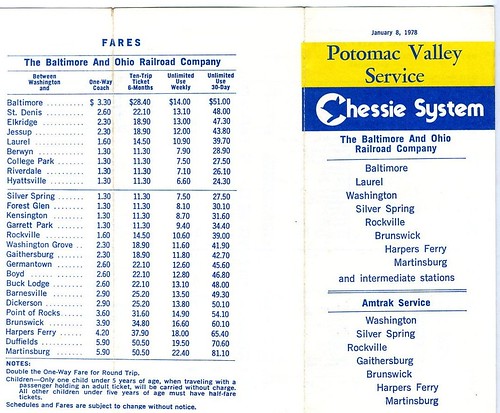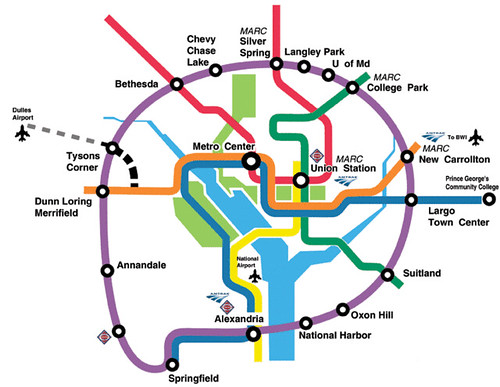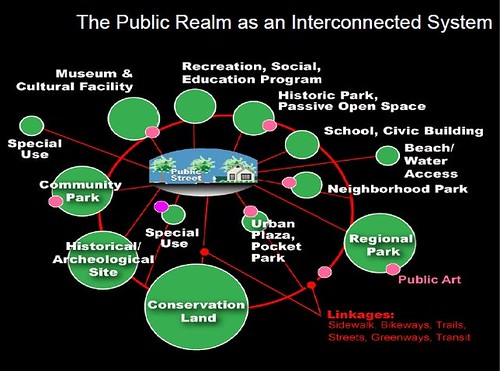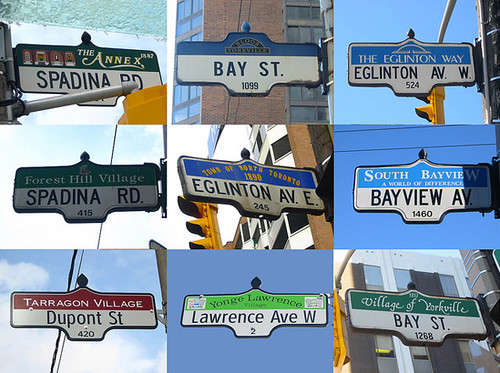Maryland gubernatorial campaign transportation agenda
As I mentioned in the post last week, "Tolls, parking taxes, elections, oh my!," Purple Line Now! is sponsoring a candidates forum tonight and only one major gubernatorial candidate even mentions transportation in his platform.
I suggested that advocacy groups join together and produce a state and county-level campaign agenda for sustainable transportation to use during the election cycle. No one has taken me up on the idea.
I wrote this in email as a start:
1. With regard to Action Committee for Transit (Montgomery County's leading transit advocacy group, which is starting to stake more positions on other sustainable transportation issues), while they have a position on MARC two way service through MoCo, there isn't a MARC tab in the left sidebar of their website.
Historically, train service to Martinsburg WV wasn't two-way during the daytime, because back then few people from DC had any reason to "reverse commute" to Montgomery County. With the development of office complexes in the Wisconsin Avenue and I-270 corridors, taking the train from DC or Silver Spring to White Flint, Rockville, Gaithersburg, or Frederick may make sense and would be a lot faster, albeit more expensive, than current public transit alternatives.

2. ACT is also in favor of an extension to the western leg of the red line (as am I and something I've been meaning to write about).
3. Lately I have been mentioning a separate Metro line emanating from Fort Totten up New Hampshire Ave. to White Oak, although this is something Ben Ross and I talked about briefly once before.
Andrew Bossi's conceptual map of metrorail expansion shows a separated yellow line, but with a routing different from what I am thinking about. DC's objectives for a separated yellow line are different from Montgomery County's, so having two different extensions probably makes sense.
4. Which would be different from a separated yellow line primarily serving DC up Georgia Ave. and going to Silver Spring, but beyond that would be up to MoCo
5. I just don't know MD and MoCo issues well enough to say what a MoCo transportation agenda should be but here are some things:
- Allowing a local add-on gasoline excise tax
- extending complete streets requirements at the state level to local jurisdictions
- Building the Purple Line obviously
- Two way MARC service to/from Frederick, adding a third track to accommodate this
- Extending the western leg of the Red Line
- Making Wisconsin Ave.-Rockville Pike a "Signature Street" (see my writings about this concept--below) from the DC line to (and past) Rockville for Montgomery County and SHA/MDOT/State of Maryland as a pilot project + the White Flint MARC Station
- Beginning planning for a New Hampshire Avenue Yellow Line Metrorail expansion to White Oak, emanating from Fort Totten Metrorail station
- Montgomery County's BRT initiative
- Planning with the State of Virginia to extend the Purple Line west to Tysons

6. For Prince George's I don't have much other than:
- Building the Purple Line obviously
- But as importantly beginning the planning for the segment between New Carrollton and Alexandria Virginia, with priority emphasis from the Suitland station to Alexandria for service to National Harbor
- Making University Boulevard a "Signature Street"
- Building the Red Line
- Reconfiguring the current light rail line with modern light rail vehicles
- Building a fixed rail transit network for Greater Baltimore ("From the files: transit planning in Baltimore County" from this blog, and "THE PORTAL TO A RED LINE THAT WOULD ACTUALLY WORK EFFECTIVELY" and "THE FULLY INTEGRATED METRO/LIGHT RAIL/STREETCAR PLAN" from Baltimore Innerspace).
- Allowing a local add-on gasoline excise tax
- Approaching Virginia to begin the discussions about merging MARC and VRE and beginning to create one integrated passenger rail system for the region, ultimately serving DC, MD, VA, and parts of WV, PA, and DE ("Regional transportation planning and fixed rail service")
- Expanding planning for Purple Line extensions to Virginia from Bethesda and from New Carrollton
Labels: elections and campaigns, fixed rail transit service, quality of life advocacy, sustainable land use and resource planning, transportation planning, urban design/placemaking






1 Comments:
I would love to see that metro map come to life some day
Post a Comment
<< Home